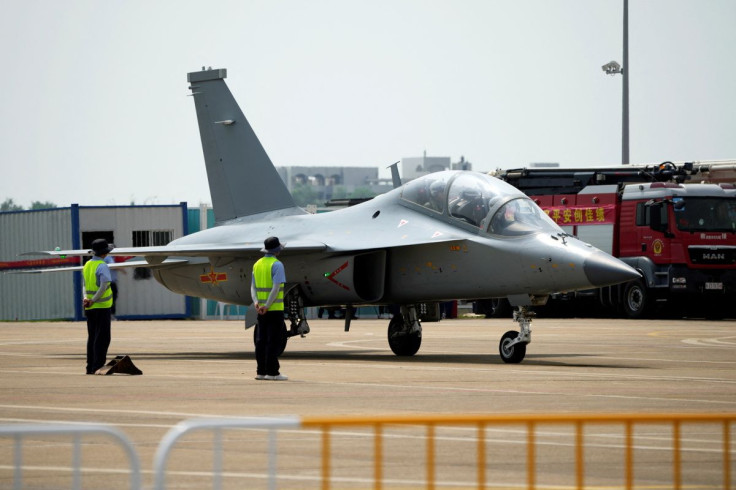Taiwan-China Update: 19 Chinese Air Force Planes Enter Taipei's Defense Zone Within 24 Hours

KEY POINTS
- Taiwan has reported multiple sightings of China's J-10 warplanes inside ADIZ
- Taiwan mobilized its air force and navy to respond to Chinese incursions
- China is protesting a U.S. flight mission across Taiwan Strait
Taiwan reported multiple Chinese air incursions in one day on Wednesday local time, accusing China of regularly harassing the self-ruled island.
According to Taiwan's National Defense Ministry, 19 Chinese J-10 warplanes had flown into the southwestern part of the island's air defense identification zone (ADIZ) in the past 24 hours.
Taiwan mobilized its air force planes to respond to the Chinese air incursions.
However, Channel News Asia reported that the Chinese aircraft did not fly over the sensitive median line of the Taiwan Strait, which serves as an unofficial barrier between Taiwan and China.
The latest incursions in Taiwan's air defense zone came after the island reported Chinese military aircraft sightings in the past two days.
According to a Taiwan News report, the Taiwanese Defense Ministry tracked 14 Chinese warplanes and three naval vessels around the island between Monday and Tuesday.
Taiwan monitored a total of 325 Chinese military aircraft and 112 naval ships around the island in February alone.
On the other hand, China is protesting after a U.S. reconnaissance plane flew across the Taiwan Strait on Monday, accusing its rival of "endangering" peace in the region.
The Eastern Theater Command of China's People's Liberation Army (PLA) said it sighted a P-8A Poseidon maritime patrol and reconnaissance aircraft.
But the U.S. Navy 7th Fleet said the P-8A flight mission followed international law while upholding the freedom of navigation in the strait.
The Taiwanese Defense Ministry described the U.S. flight mission as "normal."
The increasing tension in the already precarious relations between China and Taiwan came after a poll revealed that U.S. voters support sending the country's navy and air force to defend the island against Chinese attacks.
A separate Taiwan News report cited a poll conducted by Rasmussen between Feb. 13 and Feb. 15, which revealed that a clear majority of American voters would support imposing tough economic sanctions on China and deploying the U.S. Navy and Air Force to defend Taiwan.
However, the survey also showed that 46% of the respondents rejected sending soldiers to Taiwan in the event of a Chinese invasion of the island. Only 42% said they support such a move.
The U.S. and Taiwan are looking to deepen their military ties to counter China's "authoritarian expansionism" in the region.
Last week, reports said the U.S. was planning to send 200 additional service personnel to the island to expand its military training with Taiwanese forces.
The planned troop deployment would be the largest deployment of U.S. forces in Taiwan in decades.
Taiwanese President Tsai Ing-wen has also signaled to boost the island's defense cooperation with the U.S.
Taiwan split from China in 1949 after a civil war, but the Asian superpower has not recognized the island's independence.

© Copyright IBTimes 2024. All rights reserved.






















